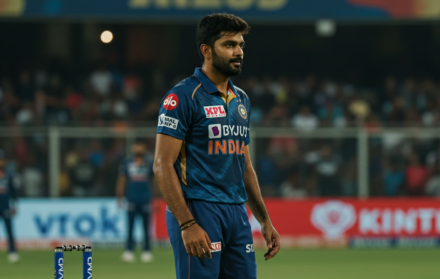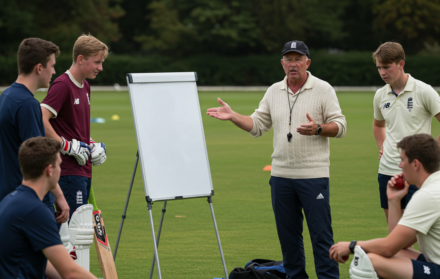
Women’s Cricket and Grassroots Development
The development of women’s cricket at the grassroots level is essential for the sport’s growth and sustainability. By nurturing young talent and providing opportunities for girls to engage with cricket from an early age, the future of women’s cricket can be secured. This article explores the current landscape and initiatives aimed at promoting women’s cricket and grassroots development.
A strong foundation in the sport is built through effective coaching and training programs. Implementing the right cricket coaching techniques for kids is crucial in developing the skills and confidence of young players. These techniques help create a supportive and encouraging environment where girls can thrive.
Participation in cricket tournaments and leagues for children also plays a vital role in grassroots development. These events provide young girls with the experience and exposure needed to compete at higher levels. Additionally, they offer a platform to showcase talent and gain recognition.
Another significant aspect of grassroots development is ensuring that cricket is accessible to all children, regardless of their background. Promoting inclusivity and diversity in kids’ cricket helps to create a more equitable sport. It encourages participation from various communities and ensures that everyone has the opportunity to play and enjoy cricket.
Furthermore, developing hand-eye coordination and other fundamental skills is critical for young cricketers. Engaging in activities that focus on developing hand-eye coordination through cricket can significantly enhance a player’s performance. These activities are designed to improve reflexes, precision, and overall gameplay.
The benefits of playing cricket for children extend beyond physical fitness. Cricket helps in building confidence and self-esteem, fostering teamwork, and teaching important life skills. These positive impacts are vital for the holistic development of young girls, making them more confident and capable both on and off the field.
Parents also play a crucial role in the development of young cricketers. Their parental involvement and support can significantly influence a child’s experience and progress in the sport. Encouraging and actively participating in their cricket journey can help sustain their interest and commitment.
As women’s cricket continues to grow, inspirational stories of young cricketers who have excelled can serve as powerful motivators. Sharing inspirational stories of young female cricketers who have overcome challenges and achieved success can inspire the next generation to pursue their dreams in cricket.
The future of women’s cricket depends heavily on effective grassroots development. By focusing on coaching, tournaments, inclusivity, skill development, and support from parents and communities, young girls can be encouraged to take up cricket and excel. The journey begins at the grassroots level, and with the right support and resources, women’s cricket can continue to thrive and grow.
The Importance of Grassroots Development

Grassroots development is the bedrock of any sport, providing the foundation for future talent and ensuring the sport’s long-term sustainability. In women’s cricket, grassroots programs are essential for several reasons:
Grassroots initiatives introduce young girls to cricket, encouraging them to take up the sport. By providing access to training, facilities, and competitions, these programs help increase participation rates. Early exposure to cricket can spark a lifelong passion for the game and inspire more girls to pursue it at higher levels.
Grassroots programs play a crucial role in identifying and nurturing talent from a young age. Through structured coaching and competitive opportunities, talented players can be spotted early and provided with the necessary support to develop their skills. This ensures a steady pipeline of skilled players who can progress to elite levels.
Grassroots cricket provides a supportive environment where young players can learn and hone their skills. Regular training sessions, matches, and feedback from coaches help build technical proficiency and game awareness. Additionally, participating in cricket can boost self-esteem and confidence, empowering young girls both on and off the field.
Cricket is a physically demanding sport that promotes health and fitness. Grassroots programs encourage regular physical activity, helping to combat sedentary lifestyles and associated health issues. By promoting an active lifestyle from a young age, cricket can contribute to the overall well-being of participants.
Cricket is a team sport that requires communication, collaboration, and mutual support. Grassroots programs provide a platform for young players to develop social skills, make new friends, and learn the value of teamwork. These experiences are invaluable in shaping well-rounded individuals.
Investing in grassroots development ensures the sustainable growth of women’s cricket. By nurturing young talent and increasing participation, the sport can continue to thrive and evolve. Grassroots programs create a solid foundation for the sport, ensuring its long-term success and popularity.
In summary, grassroots development is vital for the future of women’s cricket. It increases participation, identifies talent, builds skills and confidence, promotes health and fitness, fosters social skills, and ensures sustainable growth. By investing in grassroots initiatives, the foundations for a vibrant and successful future for women’s cricket are laid.
School Programs and Initiatives
Schools play a critical role in grassroots development for women’s cricket. Introducing cricket into school curriculums and extracurricular activities can significantly boost participation and interest in the sport among young girls. Here are some key initiatives and strategies that schools can adopt to promote women’s cricket:
Schools can integrate cricket into their physical education programs, providing students with regular exposure to the sport. Basic skills such as batting, bowling, and fielding can be taught during PE classes, laying the groundwork for further development. This approach ensures that all students, regardless of their background or prior experience, have the opportunity to try cricket.
Organizing school-level cricket competitions and tournaments can create excitement and enthusiasm for the sport. Inter-school matches provide a platform for students to showcase their skills and compete in a supportive environment. These events can also help identify talented players who may benefit from additional training and support.
Schools can establish cricket clubs and offer after-school cricket programs. These clubs provide a structured environment for students to receive coaching, practice regularly, and play matches. By offering cricket as an extracurricular activity, schools can cater to students who are passionate about the sport and want to develop their skills further.
Schools can collaborate with local cricket clubs to enhance their cricket programs. Clubs can provide coaches, facilities, and resources to support school cricket initiatives. These partnerships can also create pathways for students to transition from school cricket to club cricket, ensuring continued development and opportunities for progression.
Hosting cricket festivals and events can generate interest and participation in the sport. Schools can organize fun and inclusive cricket days, where students can participate in various cricket activities and games. These events can include skills challenges, mini-matches, and coaching clinics, making cricket accessible and enjoyable for all students.
Providing training and development opportunities for PE teachers can enhance the quality of cricket coaching in schools. Workshops and courses can equip teachers with the knowledge and skills to effectively teach cricket and inspire their students. Empowering teachers to deliver high-quality cricket programs is crucial for the success of school cricket initiatives.
Schools can invite female cricketers and coaches to speak to students and share their experiences. Role models and ambassadors can inspire young girls to take up cricket and pursue their dreams. Hearing from successful female cricketers can motivate students and provide them with a tangible connection to the sport.
By incorporating cricket into school programs and initiatives, schools can play a pivotal role in grassroots development. These strategies can increase participation, develop skills, and foster a love for cricket among young girls, ensuring a strong foundation for the future of women’s cricket.
Community-Based Cricket Programs

Community-based cricket programs are essential for reaching a broader audience and providing opportunities for young girls to engage with the sport. These programs often operate at the grassroots level, ensuring that cricket is accessible to all, regardless of their background or circumstances. Here are some key aspects and strategies of community-based cricket programs:
Community cricket programs should be inclusive and accessible to all young girls. This means offering free or low-cost sessions, providing equipment, and ensuring that facilities are available in diverse and underserved areas. By removing barriers to participation, these programs can reach a wider audience and promote equality in the sport.
Local cricket clubs and associations play a crucial role in community-based programs. These organizations can offer coaching, facilities, and competitive opportunities for young players. Clubs can also run outreach programs to attract new participants and engage with the community. By fostering strong relationships with local schools and organizations, cricket clubs can expand their reach and impact.
Street cricket and pop-up events are effective ways to introduce the sport to new audiences. These events can be held in public spaces such as parks, community centers, and streets, making cricket visible and accessible. Pop-up cricket events often include fun and engaging activities, such as mini-games, skills challenges, and coaching clinics, to attract participants and create a positive first experience with the sport.
Collaborating with community organizations, such as youth clubs, charities, and cultural associations, can enhance the reach and effectiveness of cricket programs. These partnerships can provide additional resources, support, and networks to engage with diverse communities. Working together with community organizations ensures that cricket programs are culturally sensitive and responsive to the needs of different groups.
Volunteers are the backbone of many community-based cricket programs. Recruiting and training volunteer coaches and mentors can significantly expand the capacity of these programs. Volunteers can provide coaching, support, and encouragement to young players, creating a positive and nurturing environment. Mentorship programs can also offer guidance and inspiration, helping young girls navigate their cricket journey.
Engaging families and the wider community is crucial for the success of grassroots cricket programs. Hosting family-friendly events, such as cricket festivals and open days, can encourage family involvement and support. Community events that celebrate cricket can also raise awareness and generate interest in the sport. By fostering a sense of community and belonging, cricket programs can create a supportive environment for young players.
Providing clear pathways from community programs to competitive cricket is essential for player development. This includes offering progression routes from introductory sessions to club cricket, regional academies, and representative teams. Ensuring that talented players have opportunities to progress and compete at higher levels is crucial for their development and the overall growth of the sport.
Community-based cricket programs are vital for grassroots development, providing opportunities for young girls to engage with cricket in an inclusive and supportive environment. By focusing on accessibility, partnerships, volunteer support, and community engagement, these programs can nurture the next generation of female cricketers and ensure the sport’s continued growth and success.
Pathways to Elite Cricket
Creating clear and structured pathways to elite cricket is essential for the development of young female cricketers. These pathways ensure that talented players have the opportunities, support, and resources needed to reach the highest levels of the sport. Here are some key components of pathways to elite cricket:
Talent identification programs are crucial for spotting and nurturing promising young players. These programs often involve scouting at school competitions, community programs, and local clubs. Talent scouts and coaches look for players with potential and invite them to participate in advanced training programs and development squads. Early identification of talent ensures that players receive the support they need to progress.
Regional and national cricket academies provide high-level coaching and development opportunities for talented players. These academies offer specialized training, access to top facilities, and exposure to competitive cricket. Players receive individualized coaching to enhance their skills and performance. Academies also focus on physical conditioning, mental preparation, and tactical awareness, ensuring a holistic approach to player development.
Age-group competitions, such as under-15, under-17, and under-19 tournaments, are vital for developing young talent. These competitions provide players with the experience of playing in structured and competitive environments. Representing their regions or countries at age-group levels helps players develop confidence, resilience, and match awareness. Success in age-group competitions can open doors to higher-level opportunities.
Participation in domestic leagues is a critical step for players aspiring to reach elite levels. Leagues like the Women’s Big Bash League (WBBL) in Australia, the Women’s Super League (WSL) in England, and the Indian Women’s T20 League provide platforms for players to compete against top talent. These leagues offer exposure, experience, and the chance to perform in front of selectors and scouts. Performing well in domestic leagues can lead to national team selection.
International tours and series are opportunities for young players to gain experience against high-quality opposition. Participating in overseas tours and bilateral series helps players adapt to different conditions, cultures, and playing styles. International exposure is crucial for developing well-rounded and adaptable cricketers. Young players who excel in domestic cricket are often given the chance to represent their country in these tours.
Mentorship and support systems play a vital role in the development of young cricketers. Experienced players, coaches, and mentors provide guidance, advice, and encouragement. Mentors can help young players navigate the challenges of elite sport, offering insights based on their own experiences. Support systems, including sports psychologists, nutritionists, and physiotherapists, ensure that players have access to the resources needed for peak performance.
Balancing education and cricket is essential for young players. Providing educational opportunities, such as scholarships and flexible study programs, ensures that players can pursue their academic goals alongside their cricket careers. Education provides a safety net and prepares players for life beyond cricket. Cricket academies and governing bodies often work with educational institutions to create tailored programs for young athletes.
Offering professional contracts and central contracts to talented players provides financial stability and career opportunities. Central contracts ensure that players receive regular income, allowing them to focus on their cricket development. Professional contracts with domestic teams provide additional opportunities for competitive play and career progression. Central contracts and professional opportunities are crucial for retaining talent in the sport.
Creating clear pathways to elite cricket is essential for nurturing and developing young female cricketers. Talent identification, regional and national academies, age-group competitions, domestic leagues, international tours, mentorship, educational opportunities, and professional contracts are all key components of these pathways. By providing structured and supportive development opportunities, the future of women’s cricket can be secured and strengthened.
Challenges and Solutions in Grassroots Development

Grassroots development in women’s cricket faces several challenges, but with strategic solutions and concerted efforts, these can be addressed effectively. Here are some common challenges and potential solutions:
Many young girls face difficulties accessing proper cricket facilities and equipment, which can hinder their development and participation in the sport.
Partnerships with local authorities, schools, and community organizations can help provide access to facilities. Sponsorship deals and funding from cricket boards and associations can ensure that equipment is made available to grassroots programs. Mobile cricket units and pop-up facilities can also be used to reach underserved areas.
The shortage of qualified and experienced coaches is a significant barrier to the development of young female cricketers.
Investing in coach education and development programs is crucial. Offering coaching courses and certifications, providing incentives, and creating career pathways for coaches can help attract and retain talent in coaching. Encouraging former players to take up coaching roles and providing mentorship opportunities can also enhance the quality of coaching available.
In some regions, societal and cultural norms may discourage girls from participating in sports, including cricket.
Community engagement and awareness campaigns can help challenge and change perceptions about girls in sports. Showcasing successful female cricketers as role models and promoting the benefits of sports participation can encourage acceptance and support. Creating inclusive and supportive environments within clubs and programs ensures that girls feel welcomed and valued.
Young players often struggle to balance their academic commitments with their cricket development, which can impact their progress in both areas.
Schools and cricket academies can work together to create flexible study programs that accommodate the demands of both education and sports. Providing academic support and tutoring, offering scholarships, and promoting time management skills can help young players balance their commitments effectively.
The cost of participating in cricket programs, including fees, travel, and equipment, can be prohibitive for some families.
Offering scholarships, subsidies, and financial assistance can make cricket programs more accessible. Sponsorships and partnerships with businesses can provide additional funding and resources. Community fundraising events and initiatives can also help support grassroots programs financially.
Sustaining interest and participation in cricket among young girls can be challenging, especially with competition from other sports and activities.
Creating fun, engaging, and varied cricket programs can help retain interest. Incorporating different formats of the game, organizing social events, and promoting a positive and inclusive environment can keep participants motivated. Regular feedback and recognition, such as awards and certificates, can also help maintain enthusiasm and commitment.
Limited competitive opportunities can hinder the development of young players and their progression in the sport.
Organizing regular competitions, leagues, and tournaments at different levels can provide valuable match experience. Creating pathways from grassroots to elite levels ensures that players have clear progression routes. Collaborating with neighboring regions and countries to organize cross-border competitions can also enhance competitive opportunities.
By addressing these challenges through strategic solutions and collaborative efforts, the development of women’s cricket at the grassroots level can be significantly enhanced. Ensuring access to facilities and equipment, investing in coach education, challenging societal norms, balancing education and sports, providing financial support, retaining interest, and offering competitive opportunities are all crucial for the continued growth and success of women’s cricket.
Grassroots Development: The Foundation of Women’s Cricket’s Future

Grassroots development is the cornerstone of the future of women’s cricket. By investing in school programs, community-based initiatives, and structured pathways to elite cricket, the sport can continue to grow and thrive. Addressing challenges and implementing strategic solutions ensures that young girls have the opportunities, support, and resources needed to succeed in cricket.
The importance of grassroots development cannot be overstated. It increases participation, identifies and nurtures talent, builds skills and confidence, promotes health and fitness, fosters social skills and teamwork, and ensures sustainable growth. By focusing on these areas, the foundations for a vibrant and successful future for women’s cricket are laid. Encouraging young girls to take up cricket from an early age not only helps in spotting potential talent but also instills a love for the game that can last a lifetime.
As the sport continues to evolve, the role of grassroots development will remain crucial. The combined efforts of schools, local clubs, community organizations, governing bodies, sponsors, and volunteers will drive the growth and success of women’s cricket. Schools play a pivotal role by incorporating cricket into their physical education programs, while local clubs provide a supportive environment for skill development and regular practice. Community organizations can help bridge gaps by reaching out to diverse groups, ensuring inclusivity in the sport.
Governing bodies and sponsors are vital in providing the necessary funding and infrastructure to support grassroots programs. Their investment in facilities, equipment, and coaching ensures that young players have the best possible start. Volunteers, often the unsung heroes, bring passion and dedication, offering invaluable support and mentorship to young cricketers.
Creating inclusive, supportive, and engaging environments is essential to inspire and empower the next generation of female cricketers. Inclusivity ensures that all girls, regardless of background, have access to cricket. Supportive environments help build confidence and resilience, while engaging activities keep the sport enjoyable and interesting.
By focusing on grassroots development, we lay the groundwork for a thriving future for women’s cricket. The sustained growth and success of the sport hinge on our ability to nurture and support young talent from the grassroots level. As these young players develop, they bring new energy, skills, and perspectives to the game, enriching the sport for everyone.
The future of women’s cricket depends on robust grassroots development. By investing in and prioritizing these foundational programs, we ensure the sport’s growth, inclusivity, and success. With the combined efforts of schools, clubs, community organizations, governing bodies, sponsors, and volunteers, we can inspire and empower young girls to achieve their full potential in cricket. The commitment to grassroots development will pave the way for a vibrant, dynamic, and successful future for women’s cricket, inspiring generations to come.





